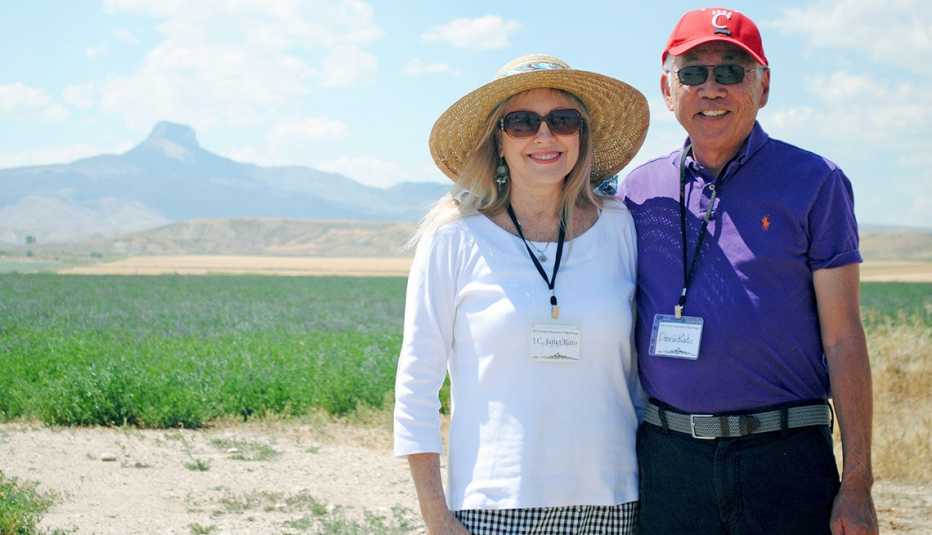AARP Hearing Center


When Dennis Kato was growing up in the 1960s in Cincinnati, Ohio, a momentous piece of his family’s history — America’s incarceration of people of Japanese ancestry during World War II — was wrapped in silence, even by his parents who had actually lived in the internment camps.
“Like many of the Japanese who came out of the camps, they really didn’t want to talk about it,” says Kato, 72, who managed restaurants all over the country and now lives in Lutz, Florida. “It wasn’t a taboo subject, but it certainly wasn’t brought up. If I were to ask a question, they might answer it — one short answer — but it really wasn’t discussed.”
For years, even Kato paid little mind to the history, although his wife, Janet, who is white and had never heard of the internment camps until they married, tried unsuccessfully to get his parents to discuss it. Now, partly at her urging, Kato has dedicated himself to researching and sharing his family’s history in hopes it will never be repeated.
He created and moderates a Facebook page, Beyond Barbed Wire, where people can share information about the camps and Japanese American history. He teaches classes about the internment and speaks to groups. His wife and their three daughters collaborated on a children’s book, Finding Moon Rabbit, about a young girl’s experience in one of the camps.
Complicated times


For Kato’s family, like many others, life changed after the Japanese attacked Pearl Harbor on December 7, 1941. Two months later, on February 19, 1942, President Franklin D. Roosevelt signed Executive Order 9066 authorizing that “any or all persons” could be evacuated from areas deemed militarily significant. In March, Public Proclamation No. 4 authorized the forced evacuation and detention of Japanese American residents from the West Coast with only 48 hours’ notice, according to the U.S. National Archives and Records Administration.
Over the next six months, about 120,000 men, women and children of Japanese ancestry — including about 70,000 American citizens — had to quickly sell or abandon homes and businesses and go under penalty of law to “assembly centers” created at places like racetracks and fairgrounds. Eventually, evacuees were moved to 10 “relocation centers” in six Western states and Arkansas, managed by the newly created War Relocation Authority: Heart Mountain in Wyoming, Tule Lake and Manzanar in California, Topaz in Utah, Poston and Gila River in Arizona, Amache (also called Granada) in Colorado, Minidoka in Idaho, and Jerome and Rohwer in Arkansas, according to the archives. Americans of German and Italian descent were also interned, although in far fewer numbers.
Both sides of Kato’s family were caught in the sweep in California. His parents, both 20, met at the Merced Assembly Center, about 100 miles east of San Jose, California, where about 4,000 internees lived at a time in around 200 barracks built on the fairground’s racetrack. Eventually both families were moved to the Granada Relocation Center, also called Amache after its postal designation.




































































More on home-family
Our American Stories
Two families, two histories, one shared nationalityThe Heroes Behind Asian American Stand-Out Achievers
Interviews with Greg Louganis, Amy Tan, Padma Lakshmi and moreA Japanese American in Hawaii Fights Back Against Prejudice and the Axis Powers
Despite mass hysteria against Japanese Americans, Terry Shima fought for the U.S.